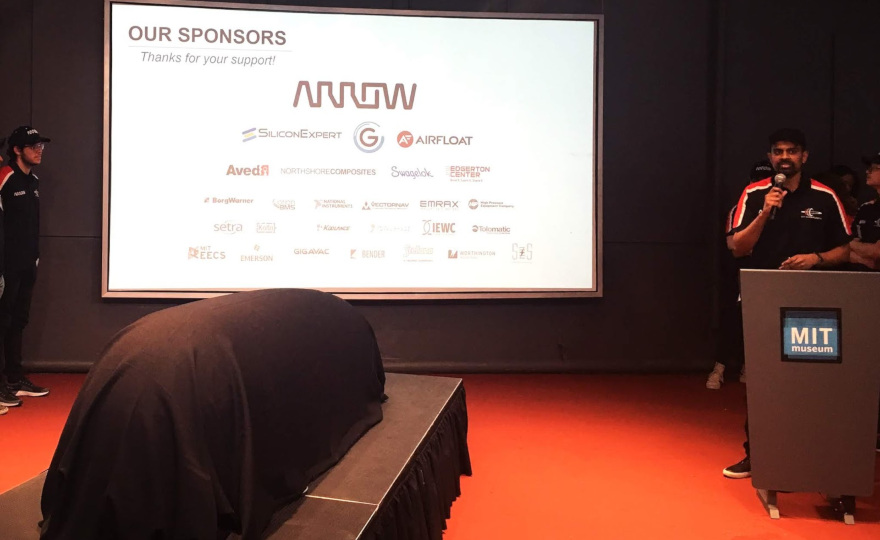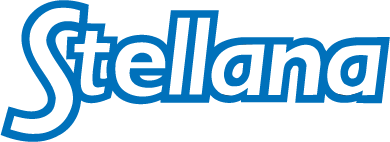Q&A: Piper Howell, Stellana Engineer, on the MIT Hyperloop II Pod Unveil
The Hyperloop pod competition was first announced in 2015 by SpaceX. Student teams were challenged to design and build the best functioning, innovative prototypes of high-speed pods. Since the announcement in 2015, three competitions have taken place in January 2017, August 2017, and July 2018. Over the course of the competitions, Stellana has gained recognition by demonstrating success through their wheels and tires. This year we are working with a couple of groups, one of which is MIT Hyperloop II. Piper Howell, Stellana Engineer, has worked closely with this team and was able to attend the pod unveil May 22. We have put together a brief Q&A to provide some insight into the competition and the future of this alternative transportation.
How did Stellana begin working with MIT Hyperloop II?
The lead of MIT’s team, Vik Parthiban, had participated in a prior competition as an undergraduate student in Texas. After beginning graduate school at MIT, he took on the role as their team captain for the 2019 competition. In previous years, different teams had sourced Stellana wheels – one of which Vik had participated on. Remembering our interest in disruptive transportation technology and our ability to make quality samples, he approached us to supply the wheels for their prototype.
First, MIT shared their design intent with us, and then we guided through them our design and engineering process and material selection. In the initial stages, we worked to understand each other’s capabilities and constraints.
How are the teams narrowed down to participate in the competition?
The competition is limited to students and teams of both undergraduate and graduate students form to participate at universities globally. Established teams must first submit a design package and are then selected to advance based on their design’s safety, feasibility, and prior results, if applicable. Out of all the submissions, 20 teams are picked to construct fully functioning prototypes. Out of those 20 teams, only three finalists are chosen to run their prototypes on the track in Hawthorne, CA.
What preparation goes into having a functioning prototype for the competition?
Before construction begins, there are a series of design submissions made to the judging panel. Teams must first secure sponsors who are willing to donate time and resources. They then complete a design intent to qualify for the competition. If the team advances to the next round, they can begin building the prototype.
This specific group first approached us in November of 2018. Their design intent was completed in January 2018, we delivered the finished wheels to them in May 2019, and the finished prototype was unveiled later that month.
What role do the Stellana products play in the function of the pod? How do these parts contribute to the overall success of their design?
Our products provide three different functions. The first is the drive wheel, which is part of the propulsion subsystem responsible for the acceleration. The others are stability and clamping wheels which ensure the pod stays on the track. Our wheels are most critical for the acceleration and braking functions of the pod. Pods are judged solely on the maximum speed achieved with successful deceleration (i.e., without crashing), so these are two crucial functions of the prototype.
Were there any hurdles along the way?
The MIT Hyperloop team was very thorough in their design approach. For us, the challenge was selecting one material to work for all three of the different wheel applications and identifying the best process to use while maintaining the quality we are known to deliver.
How has MIT tried to differentiate themselves as a competitor this year? Was there anything that surprised you about their prototype?
MIT is taking the path less traveled by using air levitation as opposed to the well-proven method of magnetic levitation. They are trying to collect data on and validate the feasibility of air bearings at high speeds. I think it is a testament to their skill that they could not only pull it off in their functioning prototype but also use it for their research process.
Having been a part of prior competitions, what are some of the differences you are noticing in this year’s pods compared to past years?
This is the most detailed view we’ve had in our collaborations, so it is hard to compare. Deciding to use air for levitation is a fascinating approach, and we look forward to seeing how they do.
How will this competition get the Hyperloop team closer to their end goal of bringing us a new form of transportation? Have you received any insight on when we may be able to travel by Hyperloop?
I think each of these competitions generates critical data to help bring the next iteration closer to the goal of widespread Hyperloop infrastructure. I would be surprised if Hyperloop infrastructure exists in our lifetime, but who knows what technology will come as a result of this competition.
Do you think we will find Stellana wheels on the functioning pods one day?
It is very possible! I think there are challenges and research to be conducted to get there, but by participating in these events, we hope to gain valuable data to allow Stellana to continue to innovate.
Thank you, Piper, for sharing your experience and good luck MIT Hyperloop II!

